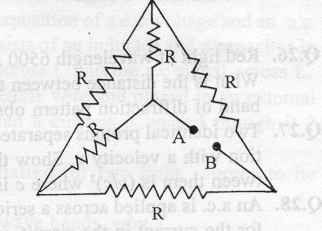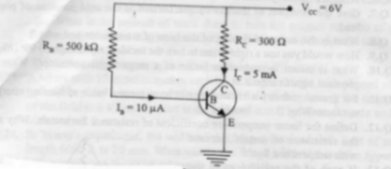|
Model Sample Paper - 5 Q.1.Will an electron in an electric field
move towards higher potential or lower potential? Q.2.Why is there no change in the energy of
a charged particle moving in a magnetic field although a magnetic force is
acting on it? Q.3.Which has higher wavelength g - rays, X - rays and microwaves? Q.4.Is a free neutron a stable particle? Q.5.What is the dimensional formula of CR? Q.6. What are majority current carriers in
n - type and p - type semiconductor? Q.7. Give the direction of thermocouple
current at the cold junction of platinum lead. Q.8.What is the extent of doping of the
base of a transistor and why? Q.9.How would you use a right prism to turn
the incident ray though (i) 900 (ii) 1 8011? Q.10. What is meant by reduction factor of
a tangent galvanometer? What is its Physical significance? Q.11. For greater stability a nucleus
should have greater value of binding energy per nucleon. Why? Q.12. Define the linear temperature coefficient of resistance for metals. Why should the resistance of metals increase with temperature? |
|
|
Q.13. If each of the resistances in th network shown in R, what is the resistance between terminals A and B? Q.14. A parallel plate with 100 m F capacitor in charged to 500 V. If the distance between its plates is halved, what will be the new potential difference between the plates and what will be the change in the stored energy? |
|
|
Q.15. Must every magnetic field configuration have a north pole and a south pole? What about ' he field due to a toroid? Q.16. Calculate the energy released by fission of 1 g of U235 in kWh. Energy per fission is 200 MeV. Q.17. A choke coil in series with a lamp is connected to a d.c. line. The lamp is seen to shine brightly. Insertion of an iron core in the choke causes no change in the lamp's brightness. Predict the corresponding observations if the connection is to an a.c. line. Q.18. When viewing through a compound microscope, our eyes should be positioned not on the eyepiece, but a short distance away from it for best viewing, why? How much should be that distances between the eye and eye piece? Q.19. Explain the principle of potentiometer. Explain how will you use it to compare two resistances? Q.20. What is interference due to multiple reflection and refraction? Obtain the condition of constructive and destructive interferences in the (a) reflected (b) refracted systems. Q.21. Explain the effect of (i) forward biasing (ii) reverse biasing, on the depletion layer in a junction diode. Q.22. How would you determine the mass of the sun? Q.23. What is Seebeck effect? Explain the variation of Seebeck e.m.f. With temperature. Hence define neutral temperature and temperature of inversion. Q.24. Two lenses P and Q of focal lengths 10 cm and -10 cm respectively are arranged 5 cm apart on their common principal axis. A point source is placed 30 cm from P in front of P with the lens Q behind P. How far from the concave lens is the final image obtained? Q.25. Does the circuit shown in the figure work as an oscillator?
|
|
|
Q.26. Red light of wavelength 6500 A from a distant source falls On slit 0.5 mm wide. What is the distance between the two dark bands on each side of central bright band of diffraction pattern observed on a screen placed 1.8 m from the slit? Q.27. Two identical protons separated by a distance r are travelling in the same direction with a velocity v. Show that the ratio of magnetic and electric forces between them is (VIC)2 where c is the speed of light in the free space. Q.28. An a.c. is applied across a series combination of L and R. Obtain an expression for the current in the circuit, impedance and power factor. OR Obtain an expression for current in a series CR circuit connected to ac. What is the average power consumed and power factor? Q.29. A parallel plate capacitor is filled with two dielectrics as shown the figures (a) and (b) Find capacitance of the capacitor in each case. Q.30.The voltage across the electrodes of a cathode ray gun is 500 V. The electron 9 beam obtained passes through a parallel plate capacitor. The electric intensity between the plates is 20 v/cm, the distance between the plates is 5 em and length is 10 cm. Calculate the deflection angle of the beam . |
|

